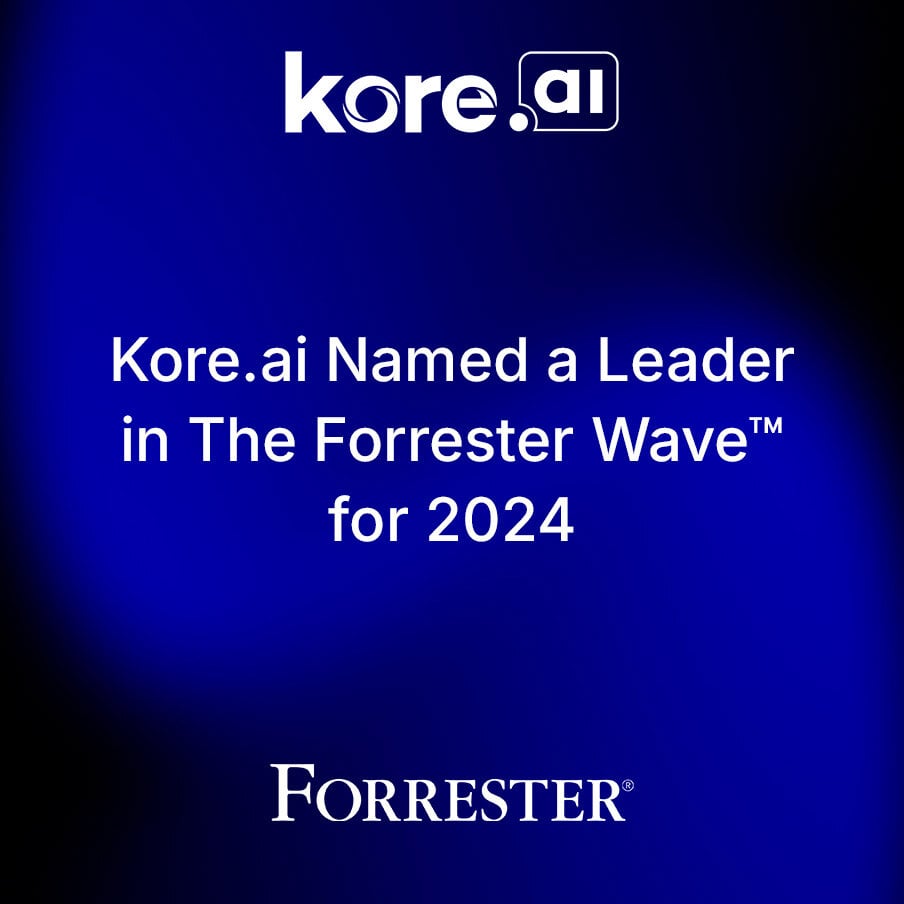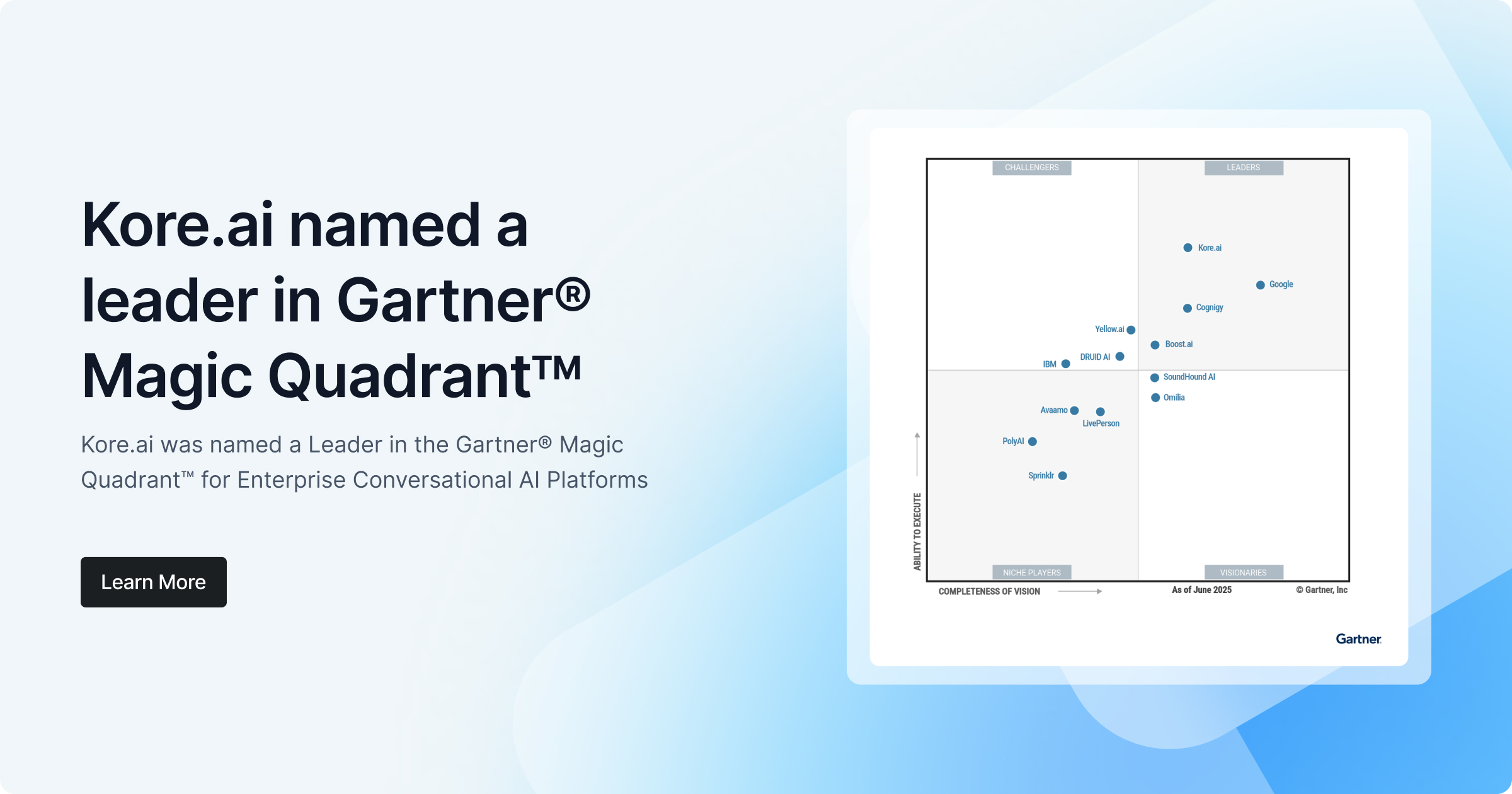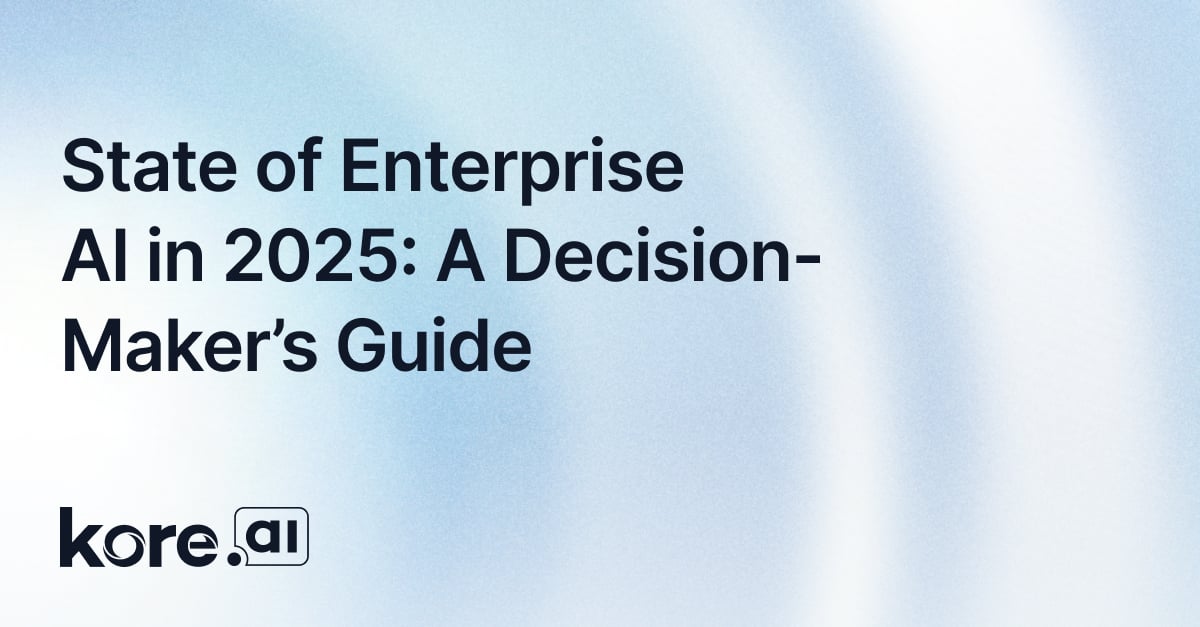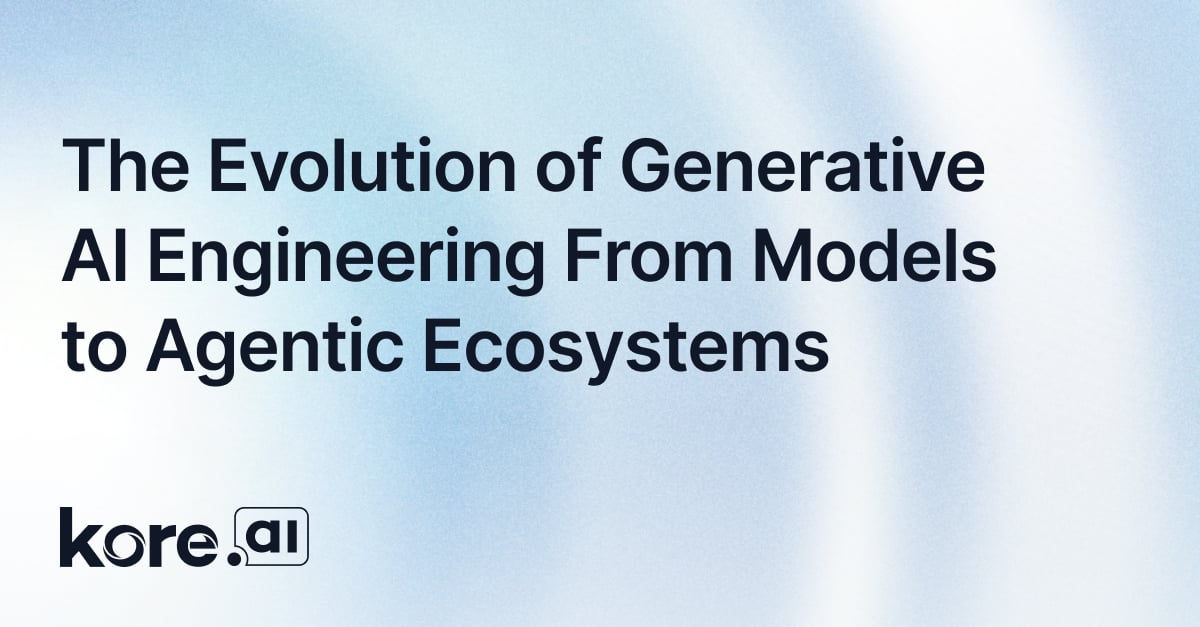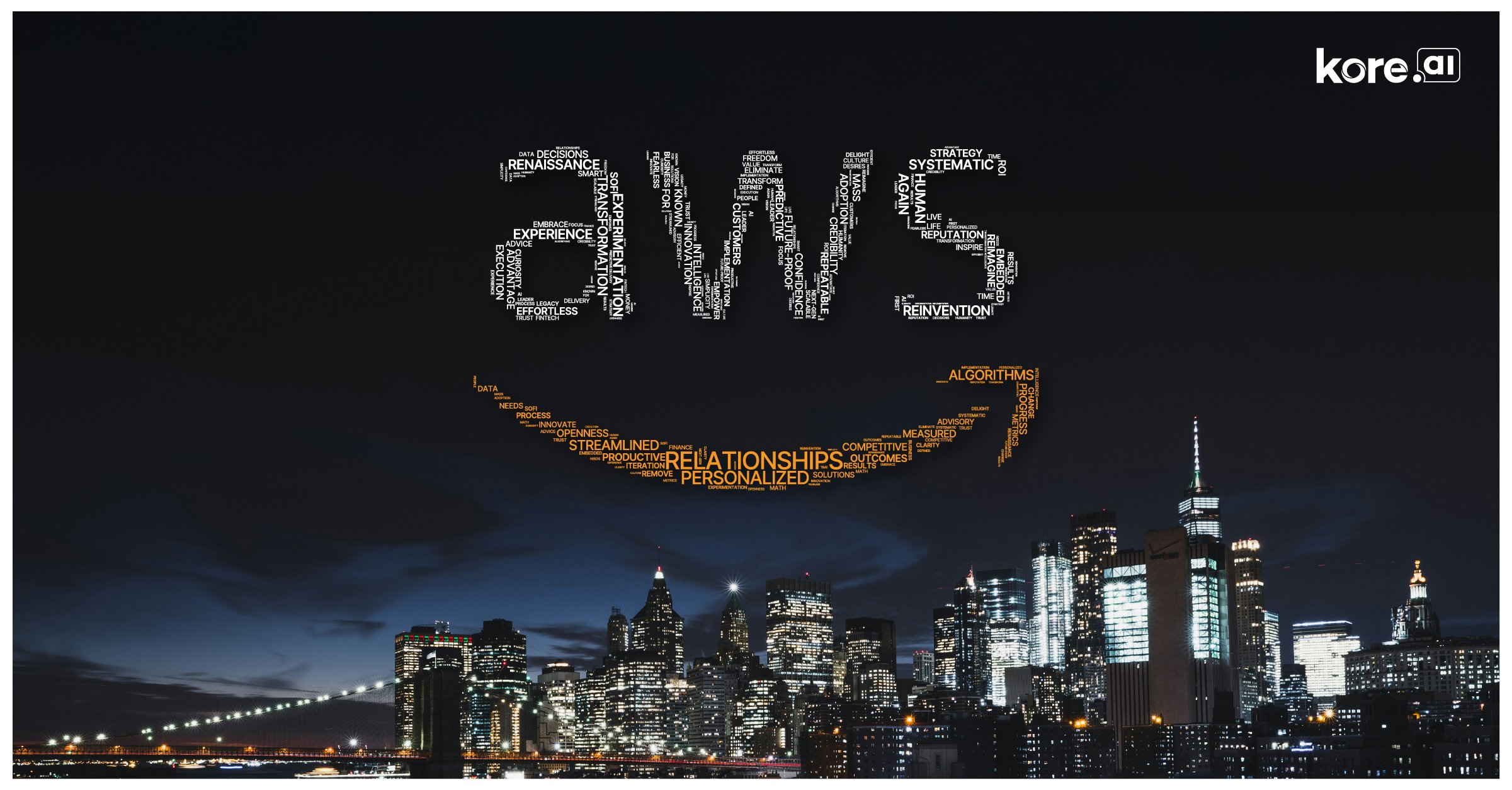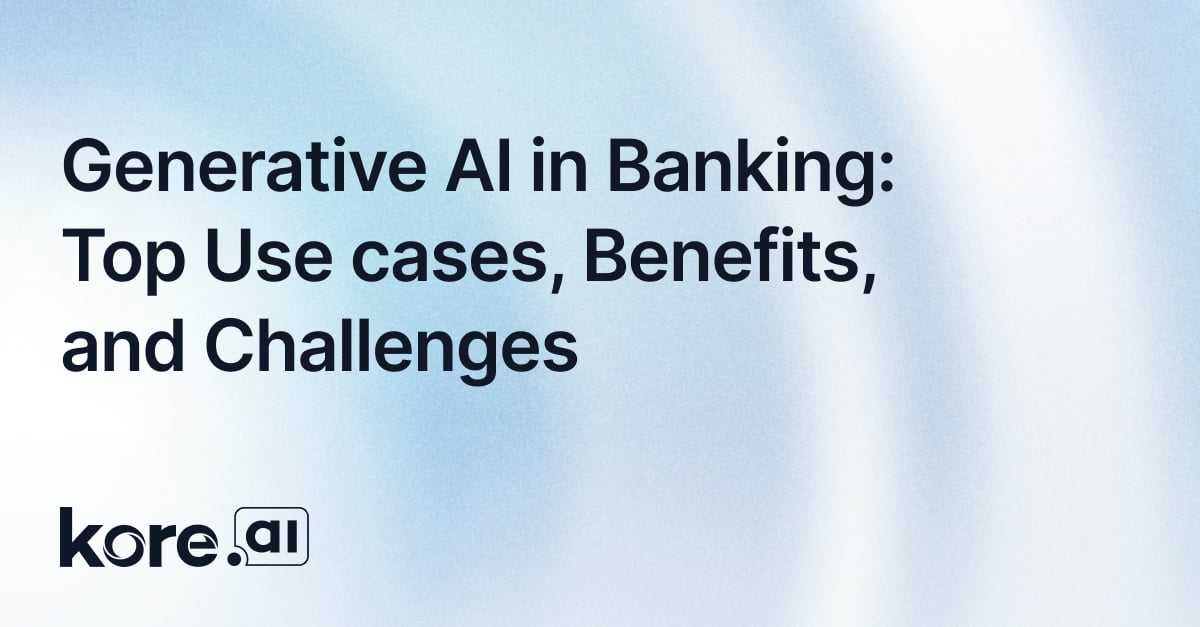Ever wonder how much time your team spends just looking for the information they need?
It’s more than you’d think. McKinsey found that employees lose anywhere from 1.8 to 2.5 hours every single day searching across disconnected systems, folders, portals, and inboxes. That’s almost a quarter of the workday gone. And it’s not just a minor inconvenience. A Gartner survey showed that 47% of digital workers say they regularly struggle to find the right information to do their jobs properly. That means slower decisions, more interruptions, and a lot of frustration.
Why is this happening?
Most enterprise search systems are still stuck in the past. They rely on keyword matching, so unless you type the exact phrase that’s buried in a file name or document body, you’re likely to miss it. And even when you do get results, you’re staring at a long list of links with no context. What’s useful? What’s outdated? What’s trustworthy? You’re left to figure it out on your own.
That’s where Retrieval-Augmented Generation, or RAG, changes the game.
RAG combines the strengths of two things: traditional search (which knows where to look) and Generative AI (which knows how to explain and summarize). Instead of dumping a bunch of links, RAG retrieves the most relevant content from across your internal systems, whether that’s SharePoint, Confluence, Notion, or email, and uses large language models (LLMs) to generate clear, concise, and meaningful answers. It doesn’t just find data. It connects the dots.
For example, instead of typing “client onboarding checklist” and skimming through a hundred results, a RAG-powered system would understand your intent, fetch the latest checklist, and generate a personalized, context-aware summary even if the information is scattered across three different systems. It can pull in policy updates from HR, link procedures from Finance, and explain them in plain language, just like a well-informed colleague would.
So rather than wasting hours digging through fragmented knowledge, employees get real answers in real time, tailored to their task. That’s the power of AI-powered enterprise search, and it’s why RAG is quickly becoming the foundation for modern knowledge discovery.
Read More: What is Retrieval-Augmented Generation?
What are Knowledge Silos? How does RAG improve Enterprise Search?
Let’s start with a story.
Cathy, a team lead in a large enterprise, is planning an international business trip. Seems simple enough, just check the travel policy and expense guidelines. But the moment she starts, things spiral. She opens the HR portal, only to be redirected to a SharePoint document. That file refers her to an expense claim procedure stored in Confluence. To complete her prep, she still needs to track down currency exchange rules tucked away in a third system. Hours later, Cathy is still stuck hunting across platforms, and in frustration, she emails HR, slowing things down even further.
This kind of scenario is frustratingly common.
The root issue? Knowledge silos.
By definition, knowledge silos are isolated pockets of information that are accessible only to specific teams, departments, or tools, preventing the rest of the organization from easily finding or using that knowledge. These silos form when systems don’t integrate well, when permissions are too rigid, or when teams develop their ways of storing and sharing information without a common structure.
In practice, that means HR has its documents, Finance has another set, and Product or Legal have theirs all stored in different formats, tools, and platforms. There’s no single place to go for an answer, and no system that connects the dots across them.
More than 80% of enterprise data is unstructured and lives in these disconnected silos inside PDFs, emails, chat logs, wikis, and file drives. Traditional keyword-based search systems aren’t equipped to make sense of that. They return long, cluttered lists without understanding context or intent. That’s why breaking down knowledge silos is such a big deal, especially for enterprise search. Cathy doesn’t need a document list; she needs a clear, actionable answer. And that’s where advanced AI, like Retrieval-Augmented Generation (RAG), comes in. RAG helps unify fragmented knowledge across departments, tools, and formats, so employees spend less time searching and more time solving.
How Does RAG Work?
At its core, Retrieval-Augmented Generation (RAG) is a smarter, more contextual way to get answers. It combines two powerful capabilities: the ability to retrieve the right information and the ability to generate clear, contextual responses. Think of it as your ideal AI assistant, it not only finds what you’re looking for but explains it back in a way that makes perfect sense for your role, your question, and your context..
Let’s break it down:
1. It Retrieves Information Based on Context, Not Just Keywords
Traditional enterprise search tools mostly rely on keyword matching. You type “Q4 revenue drivers” and get a long list of files that mention those words, but not necessarily the ones that answer your question.
RAG changes the game. It understands the meaning behind your query. Using semantic retrieval, it breaks content into smaller chunks and converts them into embeddings, basically, representations of what that content means. Then it compares that meaning to your question, pulling back the most contextually relevant chunks.
For example:
You ask, “What drove sales growth in North America last year?”
Instead of throwing documents at you, RAG identifies exactly where that insight lives, maybe buried in a marketing report, a quarterly review, or even an email summary, and returns something like:
“Sales in North America grew by 12%, largely due to targeted SMB campaigns and two new product launches in Q3.”
That’s contextual retrieval in action.
2. It Generates Clear, Contextual Answers, Like a Human Would
Once it finds the right information, RAG doesn’t just list it. It uses a large language model (LLM) to generate a complete, natural-language response, one that’s tailored to your original question and written in a conversational tone.
You’re not just getting quotes or pasted text. You’re getting contextual synthesis: a smart summary that ties together relevant points from different sources into a single, coherent answer.
Example:
“How did our European marketing campaigns perform?”
RAG might reply:
“Our European campaigns led to a 15% increase in lead generation. Germany and France were top performers due to localized messaging and strong influencer collaborations. Social media engagement rose 25%. Want a breakdown by platform or country?”
It’s fast, personalized, and feels like you’re talking to someone who already understands the background.

3. It Pulls from Everywhere, And Understands the Bigger Picture
Your data doesn’t live in one place. Some of it’s in dashboards. Some in PDFs. Some in Slack threads or Notion pages.
RAG pulls together structured and unstructured data, CRM tables, memos, call transcripts, policy docs, and gives you a unified, contextual view of your knowledge. That means fewer silos, less switching between systems, and more complete answers.
RAG also adapts to who you are. A sales rep and a finance analyst might ask similar questions, but need different angles. RAG delivers insights that are contextualized to your role known as RBAC - Role-based access control, giving each person the exact depth and framing they need.
4. It Thinks Ahead So You Don’t Have To
RAG can even anticipate what you might want next. After answering your initial query, it can offer follow-up suggestions, like “Would you like a platform-level breakdown?” or “Want to compare last year’s numbers too?”
It’s a search that doesn’t just stop at one answer; it understands the context of the conversation and keeps it going.
With RAG, search isn’t about sifting through documents anymore. It’s about asking a question and getting a clear, accurate, and contextual answer instantly. Whether you're a marketing lead, a support manager, or a CX strategist, RAG lets you tap into the full depth of your enterprise knowledge without the usual friction. It’s fast, it’s smart, and it meets you exactly where you are. And that’s what makes RAG not just another search tool, but a true engine for contextual knowledge discovery.
How does Kore.ai help enterprises find the right answers with Search and Data AI?
Search and Data AI by Kore.ai is an enterprise-ready solution that redefines how organizations access and interact with their knowledge. It combines agentic Retrieval-Augmented Generation (RAG) with advanced data processing to deliver contextual, accurate, and traceable answers from across structured and unstructured sources. Instead of surfacing documents or links, it understands the user’s intent, retrieves the most relevant information, and generates responses grounded in enterprise content, no matter where that content lives. Whether you're pulling insights from PDFs, cloud platforms, wikis, or databases, Search and Data AI ensures your teams get answers they can trust, instantly.
Capabilities of Kore.ai’s Search and Data AI
Kore.ai’s Search and Data AI gives enterprises the power to turn fragmented, unstructured data into clear, accurate, and context-aware answers. It’s built on a flexible, agentic RAG framework that combines deep data processing, semantic retrieval, and LLM-powered generation. Here’s a closer look at what it can do:
- Agentic RAG at the Core: At the heart of Search and Data AI is an Agentic Retrieval-Augmented Generation engine that powers contextual search across all enterprise knowledge sources. Instead of just matching keywords, it understands user intent, retrieves the most relevant content, and uses LLMs to generate answers grounded in trusted enterprise data. This enables a truly intelligent search experience, one that’s dynamic, interactive, and role-aware.
- Enterprise-Wide Data Connectivity: Search and Data AI connects to over 100 enterprise systems out of the box, including SharePoint, Google Drive, Confluence, Salesforce, ServiceNow, and many others. You can also upload files, crawl internal websites, or build custom connectors for legacy apps. All content, structured or unstructured, is brought into a unified search layer, ready for intelligent retrieval.
- Multi-Modal and Multi-Vector Retrieval: Search and Data AI supports multi-modal content like text, tables, PDFs, emails, webpages, and even audio transcripts. Using multi-vector embeddings and hybrid retrieval, it ensures that AI agents can surface the most contextually relevant information, even if phrased differently or stored in obscure formats.
- Smart Ingestion and Document Segmentation: The platform includes robust ingestion pipelines that extract and organize content from diverse sources. With features like custom chunking strategies and a Document Layout Studio, you can define how documents are segmented and structured so the AI retrieves precisely what’s relevant. This is especially valuable for long documents, tables, and policy files.
- Natural Language Answers with Traceability: Users can ask questions and get conversational, well-structured responses generated by LLMs. These answers are grounded in retrieved content and always include citations back to the source. This creates a high-trust environment where employees don’t just get answers, they understand where they came from.
- Role-Based Access and Guardrails: Security and compliance are built in. Kore.ai uses Role-Based Access Control (RBAC) to restrict visibility based on user roles. Admins can also set custom guardrails to redact sensitive content, block certain document types, or enforce fallback rules. This ensures that AI responses remain safe, compliant, and aligned with enterprise policies.
- Easy Deployment and Integration: Search and Data AI is built to fit into your existing workflows. You can deploy it inside customer portals, intranets, chatbots, or tools like Microsoft Teams and Slack. It also comes with SDKs and APIs so you can embed and monitor AI behavior across any system or interface.
- Speed, Scalability, and Cost Efficiency: Behind the scenes, the system is optimized for performance. Smart caching, fast vector recall, and low-latency LLM orchestration ensure quick responses even at scale. You get enterprise-grade performance without breaking your compute budget.
- Analytics and Continuous Optimization: Finally, you can measure and improve everything. With built-in analytics, admins can track user queries, identify knowledge gaps, monitor retrieval performance, and optimize both data coverage and AI behavior over time. It’s not just intelligent search, it’s a living, learning knowledge system.
Explore more about Search and Data AI by Kore.ai

RAG in Action: Practical Applications Across Enterprises
RAG’s unique blend of retrieval precision and generative power drives real-world impact across various enterprise functions. Here are key use cases demonstrating its transformative potential:
- Document Analysis and Automated Reporting - RAG transforms how teams handle dense documentation. It automatically reads, interprets, and summarizes complex files, contracts, reports, and policies into clear, digestible insights. This not only reduces manual reporting time but also ensures no critical data points are missed, improving speed, consistency, and accuracy across departments.
- Instant Support for HR and IT Teams - RAG streamlines employee support by instantly pulling relevant answers from internal knowledge bases, policy docs, IT manuals, and FAQs. Whether it’s a question about leave policy or a troubleshooting request, employees receive fast, accurate responses. This reduces dependency on support teams and frees them to focus on high-priority issues.
- Real-Time Intelligence for Customer Support Agents - Support and service agents often work under pressure, and RAG helps them find the right answers instantly. Instead of manually searching across disconnected systems, agents can ask natural language questions and get precise, citation-backed responses pulled from product manuals, support tickets, and historical records. This reduces response time and increases first-call resolution rates.
- Smarter Decision-Making for Business Leaders - Enterprise leaders rely on fast, accurate data to make strategic calls. RAG synthesizes insights from financial reports, market intelligence, competitor data, and internal analysis, providing leadership teams with clear, high-confidence responses to complex questions. It enhances decision-making by surfacing trends, risks, and opportunities in real time.
- Project Status Summarization - Instead of digging through long timelines, update threads, and project trackers, teams can use RAG to instantly summarize project status. It highlights key milestones, blockers, progress updates, and timelines all pulled from emails, documentation, and collaboration tools. This keeps everyone aligned without the need for excessive meetings.
The Future of RAG: Redefining Enterprise Intelligence
RAG is already changing how we search. By combining retrieval with generation, it gives us new ways to ask natural questions and receive meaningful, grounded answers. But the evolution isn’t stopping there; it is continuing right now. And it’s taking shape as Agentic RAG.
Agentic RAG is going beyond simply retrieving chunks and passing them to a language model. It is introducing autonomous agents that are reasoning, planning, and adapting in real time. These agents aren’t just responding, they’re breaking down complex queries, exploring multiple paths across diverse knowledge sources, and deciding what to retrieve, how to interpret it, and how to deliver an output that aligns with the user’s intent.
This shift is turning search into something far more powerful. It is enabling multi-step understanding, contextual follow-ups, and responses that reflect not just what is being asked, but why it’s being asked. It is bridging the gap between an answer and a next step. Agentic RAG is also adding a new layer of interactivity. Queries are evolving into dialogues. Tasks are being orchestrated across data sources. Responses are becoming dynamic, role-aware, and outcome-driven. Whether it’s summarizing a policy change, comparing market movements, or assisting in decision-making, Agentic RAG is allowing AI systems to respond with clarity, continuity, and intent. The original promise of RAG was better answers. The promise of Agentic RAG is intelligent action. And the future it’s shaping isn’t theoretical or distant, it’s unfolding right now.
Final Thoughts
Enterprise search is no longer just about finding documents; it’s about understanding context, delivering precise answers, and enabling faster, more informed decisions. Agentic Retrieval-Augmented Generation (Agentic RAG) is making this possible right now. By combining advanced retrieval techniques with autonomous reasoning, Agentic RAG allows AI systems to go beyond single-turn responses. It breaks down complex questions, pulls information from multiple sources, and generates intelligent, action-ready answers. This shift is turning enterprise search from a static function into a dynamic process that actively supports work, whether it’s resolving support queries, summarizing internal updates, or guiding strategic decisions.
In today’s knowledge-heavy environments, where employees often spend hours just trying to locate the right information, Agentic RAG is helping reduce that burden. It’s delivering contextual, real-time insights tailored to each user’s role and query. And as workflows grow more complex and data becomes more distributed, this kind of intelligent retrieval is quickly becoming essential. The takeaway is simple: Agentic RAG is not the future; it’s already here, transforming how enterprises access, use, and act on information. From improving productivity to accelerating time-to-decision, it's setting a new standard for enterprise intelligence.
